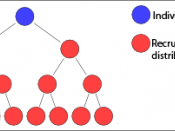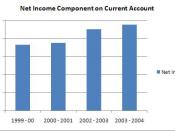Case Report Outline Case Title: Amway Japan Limited Case Authors: Mohammad Baset & Eric Wiederhold 1. Synopsis: Amway Japan Limited ( AJL) was established as the tenth subsidiary of Amway Corporation of Ada, Michigan. AJL had grown to become the most successful company in the Amway group, accounting for 30 percent of its worldwide estimated retail sales of $6.8 billions in 1996. In the Fiscal Year 1996, AJL's net income grew 21.8 percent to $257 millions. The number of its core distributorship expanded 11.6 percent to exceed the all time record of one million. However, AJL's first half results in the Fiscal Year 1997 showed net sales declining to $883 millions, down 11.6 percent from the first half of the previous year, and net income down 27.6 percent to $106 million.
2. Overall and Overall Problems: Sub-issues: First performance decline AJL has experienced since entering the direct selling market in 1979.
The first half in the Fiscal Year 1997 showed net sales declining to $883 million, down 11.6 percent from the first half of the previous year, and the net income down 27.6 percent to $106 million, which resulted form inattentiveness to address concerns pertaining to distributor and currency devaluation.
Su-Problems: a. Public confusion between "multi-level marketing" and pyramid schemes.
b. Inability to gain acceptance in major media market for almost 17 years.
c. Advertising focused on the legitimacy of the corporation and its methods of sales, not the quality of the products.
d. Increased need to addres a greater volume of claims and inquiries, due to distrust of "up-line distributor".
e. The method utilizing to motivate sales/sponsorships by the distributors provides an incentive to coerce, deceive, and manipulate to attain sales/sponsorships.
f. No follow-up with the distributor who failed to renew.
g. Many first-time sales (and sponsorship) resulted from a desire to purchase relatively expensive items at a discount.
h. Concern with the distributor perception of "price-valu trade-off".
i. An approximate 21% increase in product procurement price due to the continued depreciation of the yen against the dollar since 1995.
j. Increased competition by other direct marketers who sell comparable quality product at a lower price.
k. Legislation that negatively impacted sales; in particuler, the sales of relatively expensive items.
3. Analysis: a. Establish a method to follow-up with distributor that have not renewed to understand why they left.
b. Use the collected data from the above (a) to better enhance relationship between down-line and up-line distributors.
c. Rely more on local manufacturing to avoid concern related to currency devaluation.
d. Focus advertising to differentiate the product and its superior quality.
e. Establish training program to better educate distributors.
f. Utilizing of the Internet to enable distributor to more easily and quickly place orders.
g. Greater use of the "targeted Marketing Initiatives", as well as selected distributor promotions and rewards.
h. Recruit more distributors.
4. Recommendations: a. Distributors accounts for 70 percent of the sales in AJL.
b. The Distributor Relation Division ought to utilize collected data from Customer Service Division to retain current distributors and to enhance the relationship between down-line and up-line distributors freeing the Marketing Division to focus on the bigger picture of marketing.
c. Greater resource ( People and/or technology) ought to be provided for the Distributor Relation Division to better serve the distributors.




